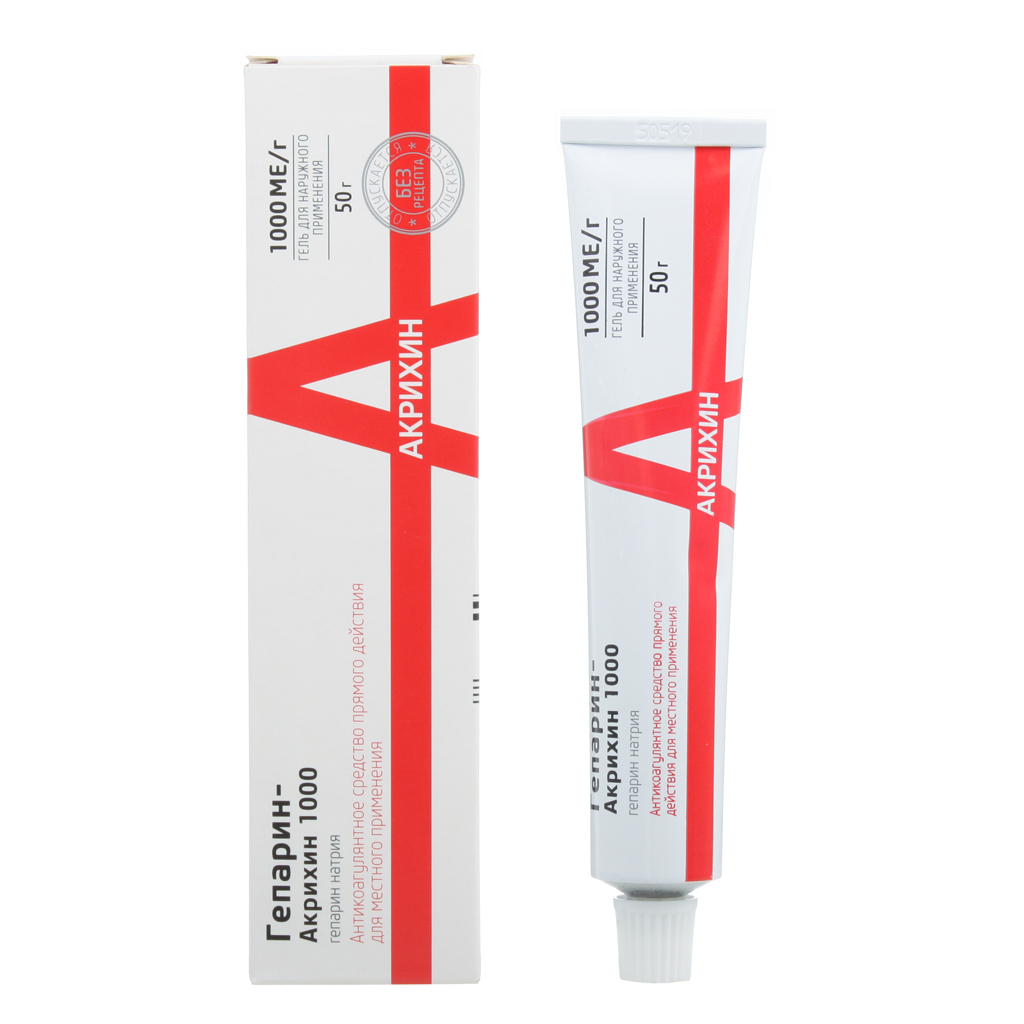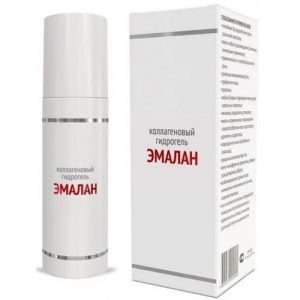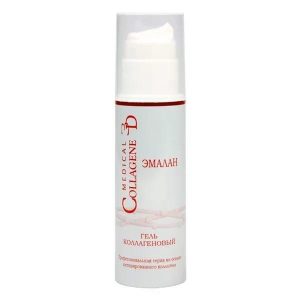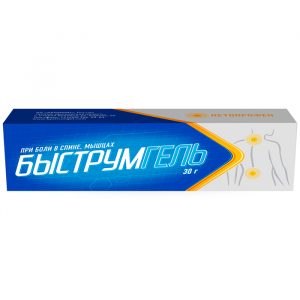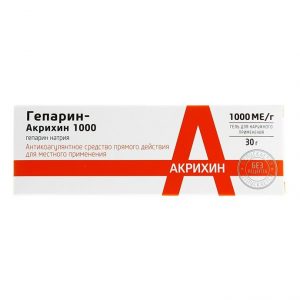Description
Release form
Gel for external use.
Pharmacological action of
ATX code: C05BA03
Pharmacological properties of
Pharmacodynamics
Direct anticoagulant, has anti-inflammatory, antiproliferative, decongestant and analgesic effects. Reduces platelet aggregation, binds antithrombin III, preventing the passage of prothrombin to thrombin. Inhibits the activity of thrombin. Reduces the activity of hyaluronidase, increases the fibrinolytic properties of blood.
Improves microcirculation and activates tissue metabolism, due to this it accelerates the resorption of hematomas and blood clots, ultimately restores patency of the veins, clinically this is accompanied by a pronounced analgesic and anti-inflammatory effect.
Pharmacokinetics
A small amount of heparin is absorbed from the surface of the skin into the systemic circulation. The maximum concentration of the active substance in the blood is observed 8 hours after application. Excretion of heparin mainly occurs through the kidneys, the elimination half-life is 12 hours.
Indications
Thrombophlebitis of superficial veins localized infiltrates and swelling of soft tissues injuries of tendons and joints, bruises of soft tissues and joints.
Contraindications
Hypersensitivity to any of the components of the drug, ulcerative necrotic changes in the skin at the site of the alleged application of the gel, traumatic violation of the integrity of the skin, decreased blood clotting, thrombocytopenia.
Use during pregnancy and lactation
The drug is not contraindicated for use during pregnancy and lactation.
Special instructions
Not recommended for use in bleeding, as well as in open wounds, mucous membranes and in the presence of local purulent processes.
Use with extreme caution in cases of increased vascular permeability.
The use of the gel is not recommended for deep venous thrombosis.
Composition
100 g of gel contain:
active substance: dry heparin of sodium in terms of dry matter – 0.83 g (100,000 ME)
excipients:
methyl parahydroxybenzoate – 0.15 g,
carbomer 940 – 1.25 g,
trometamol – 0.85 g,
ethanol 96 % (rectified ethyl alcohol) – 24 g,
lavender oil – 0.02 g,
orange flower oil (neroly oil) – 0.01 g,
purified water – up to 100 g
Dosage and Administration
Externally. The gel is applied in a thin layer on the affected area at the rate of 3-5 cm of gel on a skin area with a diameter of 3-5 cm and gently rubbed into the skin.
Apply 1-3 times a day daily until the onset of inflammation, an average of 3 to 7 days. The timing of treatment is determined by the doctor.
Side effects
Skin allergic reactions, hyperemia of the skin.
Drug Interactions
It is not recommended to mix with other products for external use.
Do not topically be prescribed simultaneously with non-steroidal anti-inflammatory drugs, tetracyclines, antihistamines.
Co-administration of the gel with oral anticoagulants may cause prolonged prothrombin time.
Overdose
An overdose is unlikely due to the low absorption of the gel components. Manifested by bleeding. Removed protamine sulfate (chemical antagonist).
Storage Conditions
At 15 to 25 ° C.
Keep out of the reach and sight of children.
Expiration
2 years.
Active ingredient
Heparin sodium
Terms leave through pharmacies
without prescription
lekarstvennaja form
Gel naruzhnej Application
Indications
Indications
Inflammation of tendons, Dislocations and astyazheniya, bruises, contusions, thrombophlebitis, varicose veins, swelling after injuries and operations
